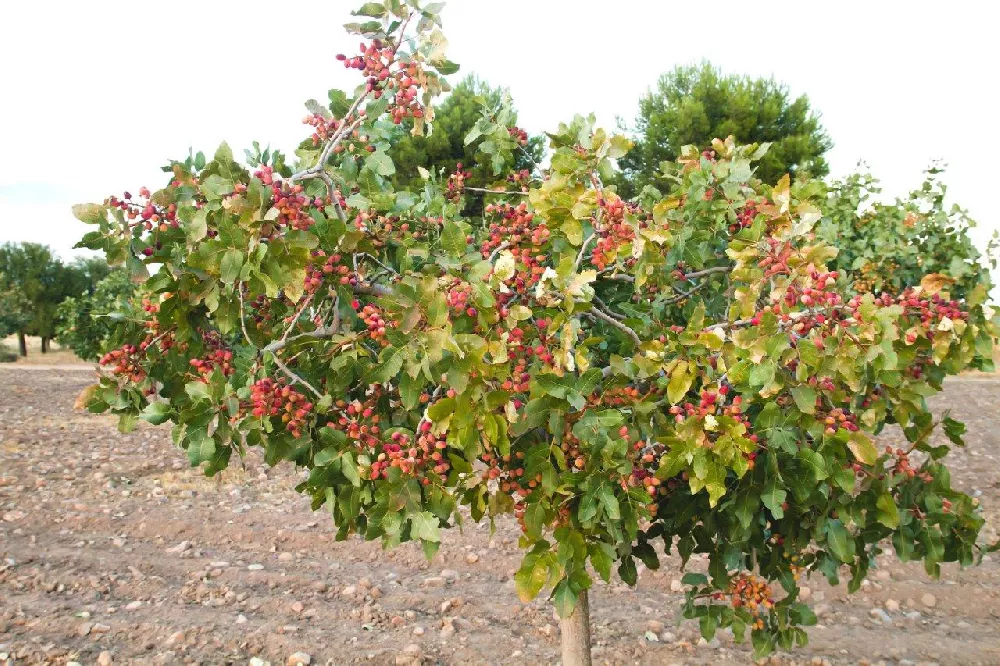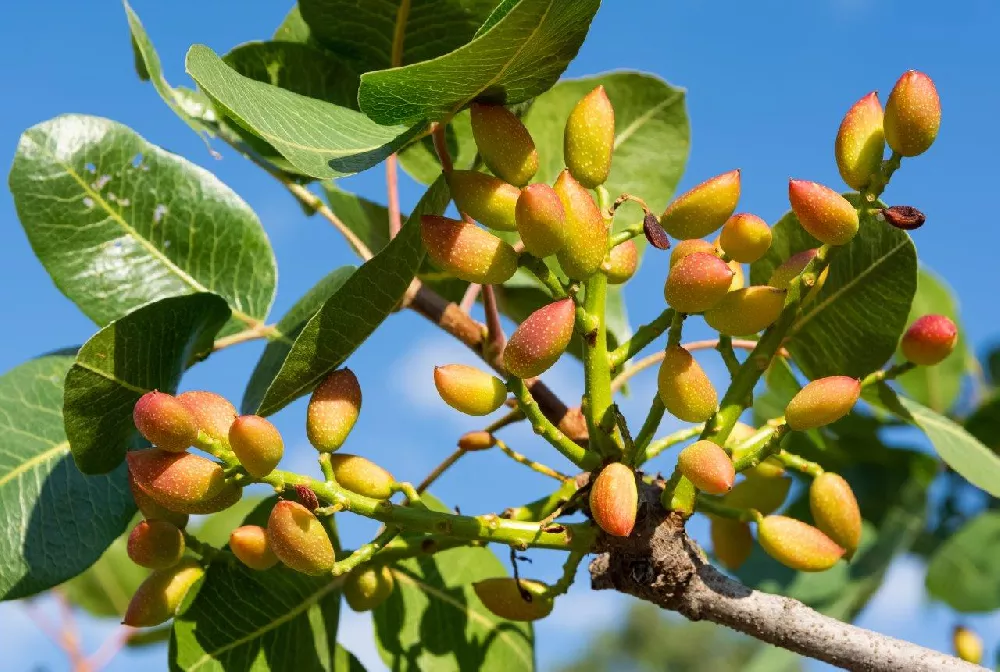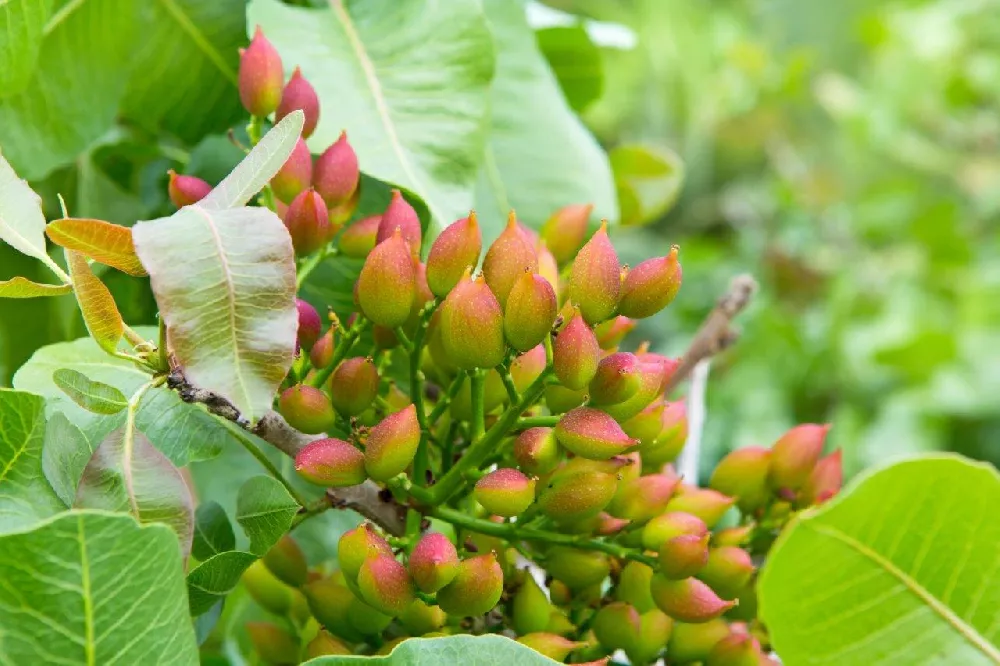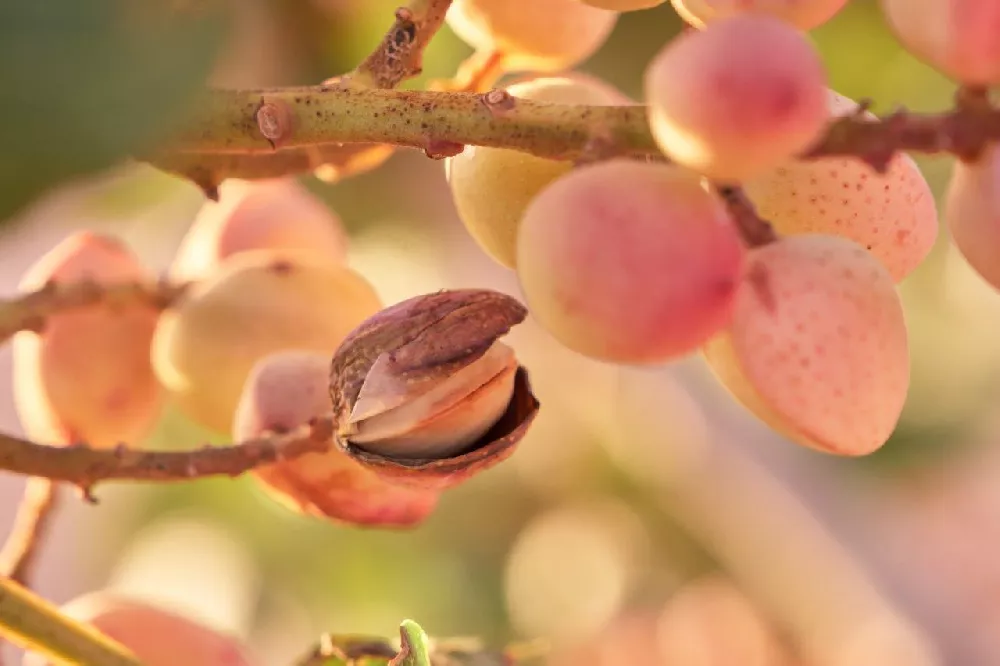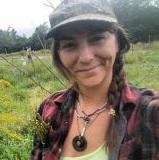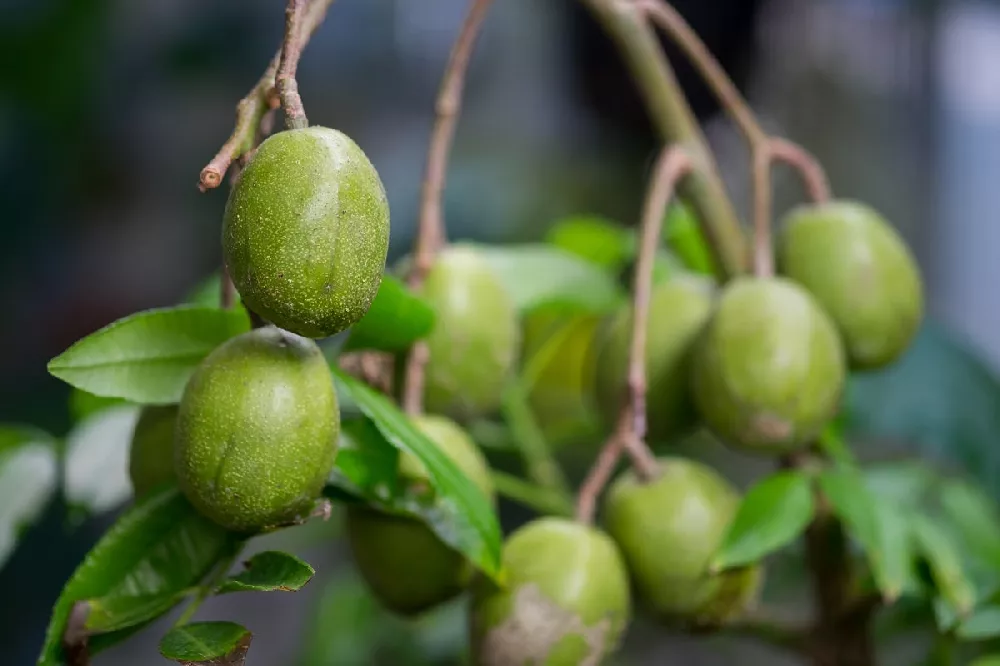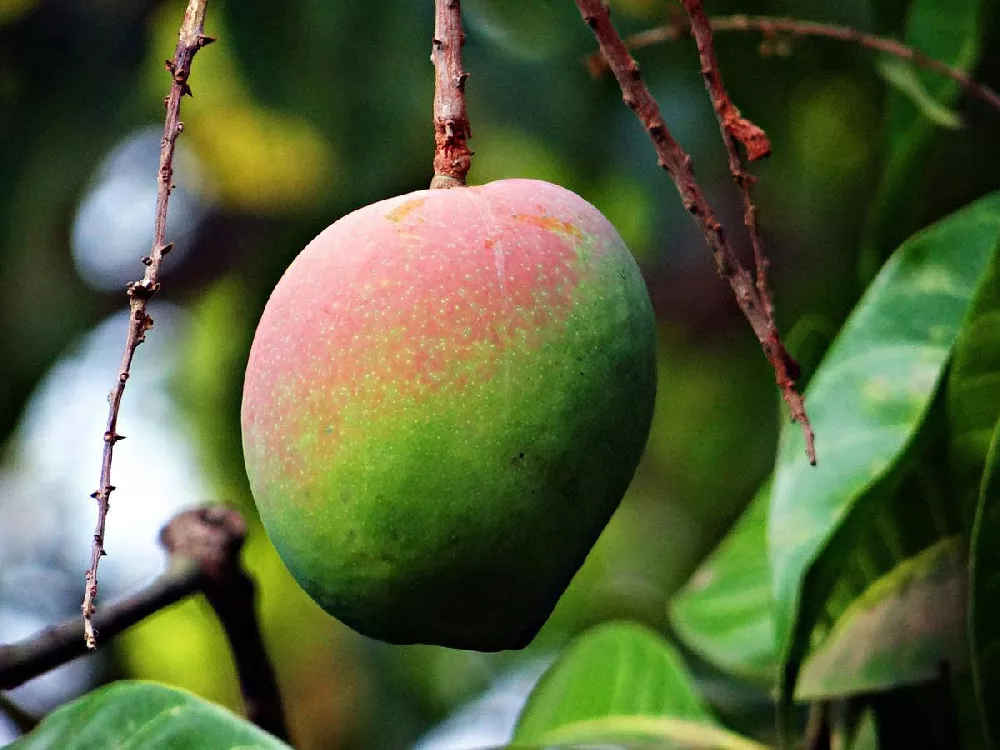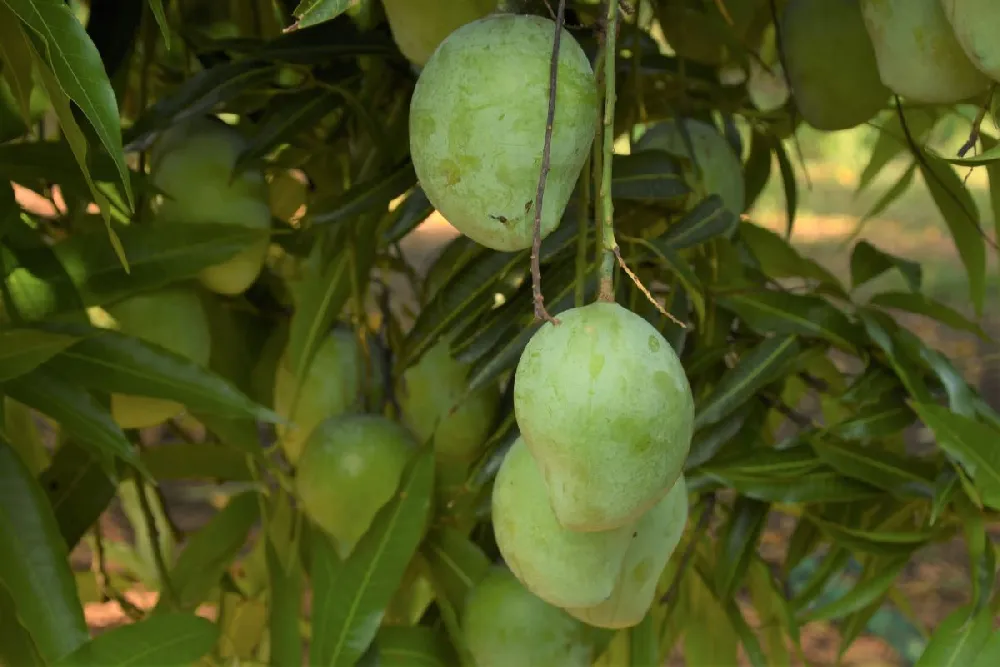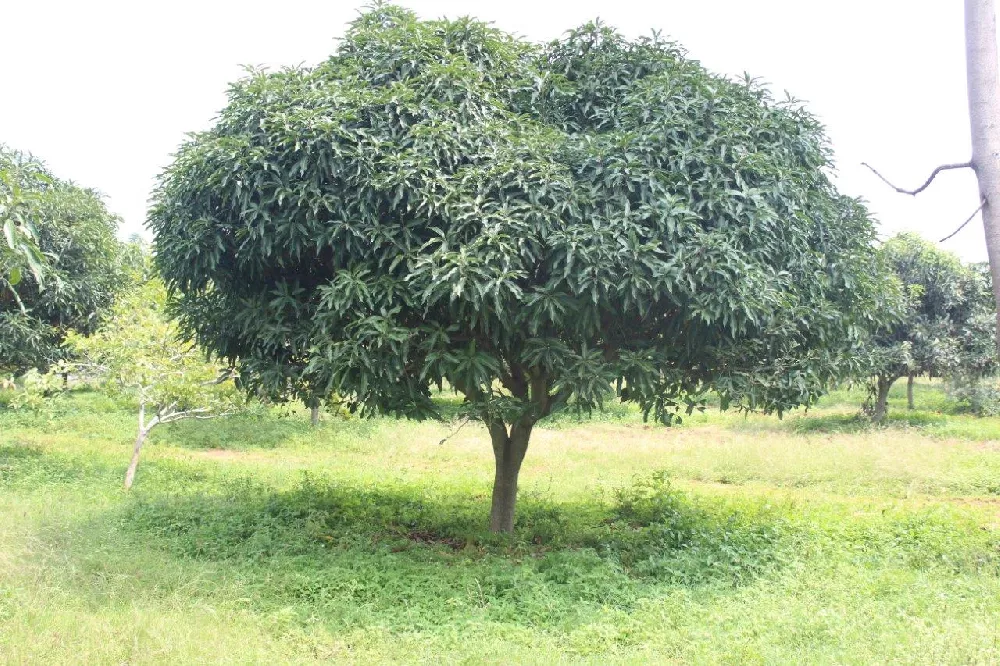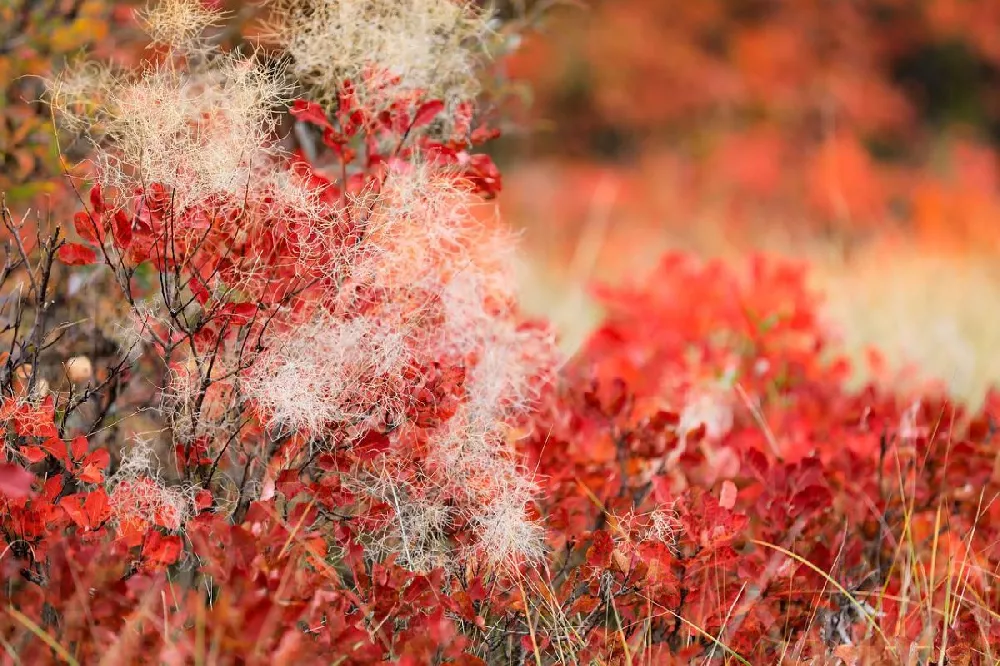- Home >
- Nut Trees >
- Pistachio Tree
Pistachio Tree for Sale - Buying & Growing Guide
Patience is a virtue when it comes to pistachio trees. Pistachio nuts are well worth the wait, and that commitment pays off with loads of tasty nuts. Pistacia vera is the most popular variety for commercial production and home gardeners. Pistachio trees have gained popularity as ornamental and fruit-producing garden trees in zones 7 through 11. Here are some other reasons you should add a pistachio tree to your garden:
- They’re one of the lowest-calorie nuts, as well as the tastiest.
- Pistachio nuts were once a delicacy fit only for royalty.
- Slow-growing pistachio trees can live for over 150 years.
Enter your zip code to find nearby stores that may carry this plant.
Plant Care
Sunlight

Needs six hours or more of sunlight per day.
Watering
Survives with minimal watering. Needs daily watering in summer to produce nuts.
Fertilizing

Apply a water-soluble fertilizer in early spring. Use a balanced fertilizer or one that is nitrogen-rich.
Planting and Care
Planting instructions
Climate is critical when it comes to growing pistachios. It is possible to grow them in USDA hardiness zones 7 through 11, but they will thrive where it is hot and dry. Pistachios do best when they have scorching summer days of 100 degrees Fahrenheit or higher. Winter temperatures of 45 degrees Fahrenheit or below chill them into dormancy. You now know the pistachio’s favorite place to be. They do not care for high elevations, extended freezing temperatures, or humidity.
Choose a sunny site with light, dry, sandy loam that is well-drained. Pistachios cannot stand wet roots. Place the trees at least 20 feet apart, but no further than 50 feet. They can grow up to 30 feet tall with taproots that go just as deep. Dig a hole twice the diameter of the root ball and place the tree inside. Slowly backfill, and add any soil amendments, while being careful not to disturb the roots. Tamp the soil down and water thoroughly.
Because pistachio trees produce an irritant that causes contact dermatitis, or a rash, care should be taken when working with the plant.
Watering and nutrients
With its deep taproots, the pistachio tree can survive intense drought conditions. Water the pistachio often, and deeply, until established. After that, it will appreciate regular watering, especially while in fruit production. Do not water during the winter or when receiving heavy rains. Yellow leaves are a sign that the tree is getting too much water.
Pistachio trees appreciate spring and fall feedings of a slow-release, balanced fertilizer. Follow the directions, and sprinkle around the base of the tree, and under the canopy, then water.
Pollination
Pistachios are fruit trees that have both male and female trees. They are wind-pollinated, so you must have at least one of each if you intend to harvest any nuts. Keep the breeze in mind when planting your trees. The pollen from the male needs an easy path to reach the female trees. It is possible to have male branches grafted onto female trees to provide you with the best of both worlds.
If you have more space, the ideal ratio for optimal nut production is one male tree planted upwind of every 10 to 15 females.
Pruning
Most pistachio trees do not need heavy pruning. Proper maintenance, and early shaping, can keep the tree healthier and more productive. Clear out any dead, or dying, branches that may encourage fungal growth or pests. Remove crossing branches that are rubbing on others, and keep the center of the tree open. The best time for pruning is during the winter, while the tree is dormant, but it is okay to do clean-up pruning any time. Always disinfect your pruning tools before and after each use, and with each tree.
Pests and diseases
Prevention and close attention plays a significant role in combating most pests and diseases. Cleaning up fallen debris under the tree helps keep pests and diseases from making a home. Watering only the tree’s base, instead of the foliage, can help deter some of the fungal attacks. In extreme cases, the use of a fungicide, or pesticide, may be necessary. Insecticides, and traps, help control six-legged pests that feast on pistachio trees.
Common pistachio tree diseases are blight, leaf wilt, powdery mildew, root rot, and wilt. Two of the worst insect offenders are pistachio psyllids and twig borers.
Harvesting
Pistachio trees are alternate bearing, meaning they produce heavily one year, light the next. Pistachios bear fruit (with nuts inside) after the first five to six years of growth. With proper care and the best location, they will reach peak productivity at about 15 years. Flowers form on new-growth branches in mid to late spring. Fruit sets and matures over the summer and is harvested in late summer or early fall.
Pistachios grow their fruit in clusters that are more like grapes than other nut trees. Once the hulls have turned a pretty pinkish-yellow it is time to harvest your pistachios. An easy method is to put a sheet or tarp on the ground and shake the tree. Ripe nuts will fall to the ground and are ready for their husks to be removed.
FAQs
Can pistachio trees be grown in containers?
Pistachio trees grow well in containers that do not crowd their roots for the first three to five years. Any longer than this can stunt the growth and cause damage to the tree’s root system, especially the long taproot. It is good practice to watch your tree and transplant it into the ground as soon as possible.
When is the best time to plant my pistachio tree?
Winter is the best time to plant your new pistachio tree, as it will be dormant. You can also plant in the early spring before your tree has come out of its winter sleep. It is best to wait until the threat of a heavy, killing, frost has passed.
What other type of maintenance might be needed?
Keep the area underneath the tree free from old leaves, nuts, and branches. Place a light layer of mulch around the tree’s base with a six to 12 inch clearance from the trunk. Pull any weeds that will compete for water and nutrients. Watch your tree’s growth over time. The branches could touch, or become entangled with wires, and other obstructions.
Where do pistachio trees come from?
Pistachio trees originated in Central Asia and the Middle East. Hot, dry, summers and cool winters provide the perfect climate for pistachios. Afghanistan, Iran, Italy, Syria, and Turkey produce most of the world’s pistachios. America has also become a significant producer of this valuable commodity. California’s arid San Joaquin Valley produces over 90 percent of the pistachios in the United States.
